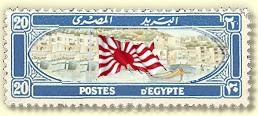

Japan's participation in World War 1 has been largely relegated to the footnotes of history. The Western World has largely forgotten that the Japanese fought on the side of the Allies against the Central Powers of Germany, Austria-Hungary and the Ottoman Empire. Many are further surprised to learn that the Japanese Imperial Navy fought German and Austrian submarines in the Mediterranean Sea. Less than 500 Japanese were killed in combat. In 1902, Britain and Japan signed the Anglo-Japanese Alliance. The British, at that time, were concerned about the Russian threat to British interests in the east, while the Japanese saw an opportunity to expand their own influence in Asia. Before a decade passed, Germany had supplanted Russia as the main threat in the Pacific and the treaty continued to be beneficial to both the British and Japanese, so it was extended. When the war started, Japan had one of the largest navies in the world, including twenty-one battleships and twenty-nine cruisers. Less than a week after the start of the war, Japan proposed that, in return for German territories in the Far East and its Pacific Islands, Japan would join the Allies. When Britain requested that the Japanese navy help patrol the eastern Pacific, Japan agreed and declared war on Germany and Austria-Hungary on August 23, 1914. By 1917, German and Austrian submarines operating in the Mediterranean were sinking Allied shipping at an alarming rate. During the entire war, the Allies would lose 12 million tons of shipping and a full quarter of that shipping was lost in the Mediterranean Sea. Despite misgivings about the quality of Japanese seamanship (based on bigotry and ignorance), the Allies pressured Japan to help out. By 1917, German and Austrian submarines operating in the Mediterranean were sinking Allied shipping at an alarming rate. During the entire war, the Allies would lose 12 million tons of shipping and a full quarter of that shipping was lost in the Mediterranean Sea. Despite misgivings about the quality of Japanese seamanship (based on bigotry and ignorance), the Allies pressured Japan to help out. What was needed were more escort ships like destroyers. In fact, most of the naval activity during the Great War involved submarines and destroyers, while the large warships of both sides-- the dreadnaughts and battle cruisers-- spent most of the war in port deterring each other The Japanese Second Special Squadron Arrives in the Mediterranean On March 11, 1917, Admiral Sato Kozo aboard the cruiser Akashi and eight destroyers comprising the Second Special Squadron left Singapore headed west and arrived at Malta, in the middle of the Mediterranean Sea on April 13. .
|
|
|